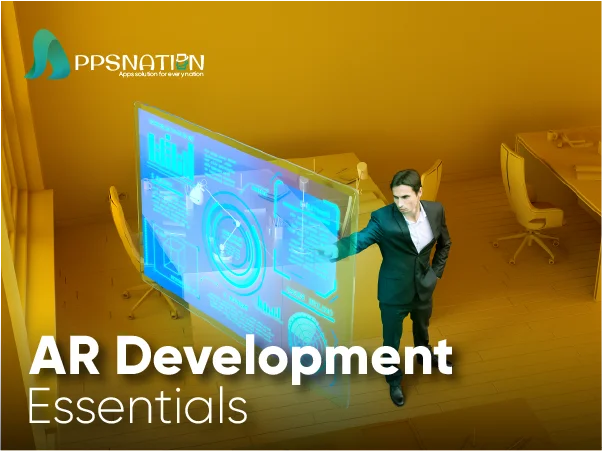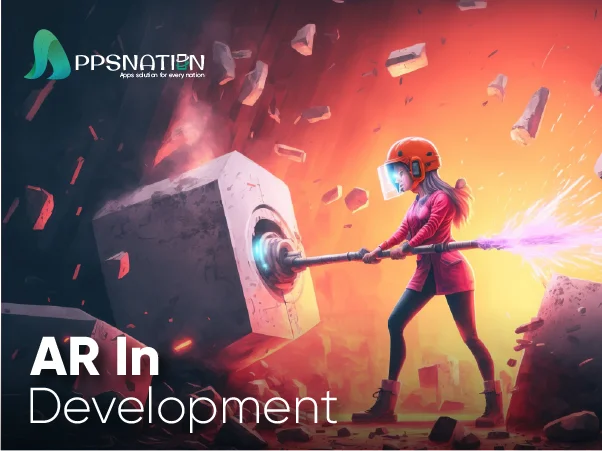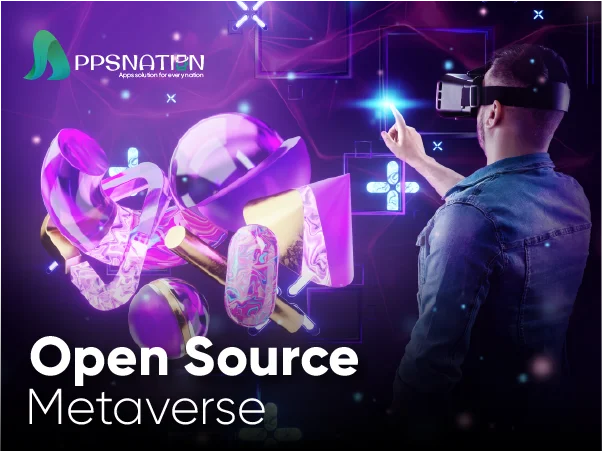Augmented Reality (AR) has rapidly emerged as a groundbreaking technology that blends virtual elements with the real world. With its ability to revolutionize various industries, AR development has become a sought-after skill for developers and businesses alike. In this article, we will explore the essential tools, techniques, and best practices for AR development, empowering you to create immersive and engaging experiences.
Table of Contents
| 1 | Introduction to Augmented Reality
|
| 2 | AR Development Tools
|
| 3 | Understanding AR Tracking
|
| 4 | Creating AR Content
|
| 5 | Implementing User Interface
|
| 6 | Performance Optimization
|
| 7 | Testing & Debugging
|
| 8 | AR Deployment and Distribution
|
| 9 | Best Practices for AR Development
|
| 10 | The Future of AR
|
| 11 | Conclusion |
| 12 | Frequently Asked Questions (FAQs) |
Introduction to Augmented Reality
Definition and Concept
Augmented Reality is a technology that overlays computer-generated content onto the physical world. Unlike Virtual Reality (VR), which creates entirely artificial environments, AR enhances real-world experiences by adding virtual elements such as images, videos, and 3D models. This immersive integration of digital content with reality opens up numerous possibilities across industries.
Applications of AR
AR has found applications in various fields, including gaming, retail, education, healthcare, and marketing. In the gaming industry, popular games like Pokémon GO have demonstrated how AR can blur the lines between virtual and real-world experiences. In retail, AR allows customers to visualize products before purchase, leading to increased sales and customer satisfaction. Educational institutions have adopted AR to make learning more engaging and interactive, while the healthcare sector has leveraged it for medical training and patient treatment.
AR Development Tools
To create AR experiences, developers rely on specialized tools that streamline the development process and facilitate content creation. Here are some of the essential AR development tools:
Unity
Unity is a widely-used game engine that supports AR development. it offers a user-friendly interface, making it easily accessible to both novices and seasoned developers. Unity’s AR Foundation package allows developers to create cross-platform AR applications that work seamlessly on Android and iOS devices.
ARKit
ARKit is Apple’s AR framework, designed exclusively for iOS devices. It enables developers to integrate AR experiences into iOS apps, taking advantage of Apple’s hardware and software optimizations. ARKit’s robust tracking and scene understanding capabilities contribute to high-quality AR experiences.
ARCore
On the Android side, ARCore serves as Google’s equivalent to ARKit. It enables developers to create AR applications for Android devices, supporting features such as motion tracking, environmental understanding, and light estimation.
Vuforia
Vuforia is an AR development platform known for its advanced computer vision technology. It allows developers to create marker-based AR experiences, making it suitable for applications like product packaging and industrial simulations.
Understanding AR Tracking
Tracking is a fundamental aspect of AR development, ensuring that virtual objects accurately align with the real world. There are several tracking methods used in AR development:
Marker-Based Tracking
Marker-based tracking relies on predefined markers placed in the physical environment. These markers act as reference points for the AR system, allowing it to anchor virtual content accurately.
Markerless Tracking
Markerless tracking, also known as location-based tracking, uses the device’s GPS and sensors to determine the user’s position and orientation. This method is ideal for outdoor AR experiences and navigation applications.
Simultaneous Localization and Mapping (SLAM)
SLAM is a complex tracking technique that uses a combination of camera vision and sensor data to create a map of the environment while simultaneously localizing the user within that map. This advanced method enables AR experiences in dynamic and unfamiliar environments.
Creating AR Content
The quality of AR experiences heavily relies on captivating and interactive content. Here are essential aspects of creating AR content:
3D Modeling and Animation
Creating 3D models and animations is crucial for realistic AR experiences. Professional 3D modeling software allows developers to design virtual objects that seamlessly integrate with the real world.
Interaction Design
Interaction design determines how users engage with AR content. Intuitive and natural interactions enhance the overall user experience, making the AR application more enjoyable and accessible.
Audio Integration
Sound plays a vital role in creating immersive AR experiences. Incorporating spatial audio and sound effects can significantly enhance the realism of virtual objects.
Implementing User Interface
A well-designed user interface (UI) is essential for guiding users through AR experiences. Here are some key considerations for implementing UI in AR:
HUD (Heads-Up Display)
HUD elements overlay essential information on the user’s screen without obstructing their view. Careful design of the HUD ensures a seamless user experience.
Gestures and Controls
Intuitive gestures and controls enable users to interact with AR content effortlessly. Pinch-to-zoom, tap-to-select, and swipe-to-rotate are common gestures used in AR applications.
User Experience
Creating a positive user experience involves minimizing complexity and ensuring that the AR application is user-friendly and enjoyable.
Performance Optimization
AR applications demand high performance to deliver smooth and immersive experiences. Optimizing performance involves:
Textures and Assets
Optimizing textures and assets helps reduce memory usage and improves rendering speed, resulting in better performance.
Frame Rate and Rendering
Maintaining a consistent frame rate is crucial for AR experiences to feel fluid and responsive.
Memory Management
Efficient memory management ensures that the AR application runs smoothly without crashes or slowdowns.
Testing and Debugging
Thorough testing and debugging are essential for delivering a polished AR application. Key aspects of this phase include:
Device Testing
Testing the AR application on various devices helps ensure compatibility and functionality across different platforms.
Emulators and Simulators
Using emulators and simulators allows developers to test AR applications without physical devices, saving time and resources.
Bug Tracking and Resolution
Identifying and resolving bugs in the AR application is critical for a smooth user experience.
AR Deployment and Distribution
Once the AR application is ready, deploying and distributing it effectively are crucial for reaching the target audience. Consider these aspects:
App Store Guidelines
Adhering to app store guidelines ensures that the AR application meets the platform’s requirements and standards.
Cross-Platform Compatibility
Ensuring cross-platform compatibility enables users to access the AR application on various devices.
Updates and Maintenance
Regular updates and maintenance keep the AR application up-to-date and functional, providing an optimal user experience.
Best Practices for AR Development
To create successful AR experiences, developers should follow these best practices:
Simplicity and Clarity
Keeping AR experiences simple and easy to understand ensures that users can interact with the application effortlessly.
Real-World Alignment
Virtual objects must align seamlessly with the real world to create a convincing and immersive experience.
User Onboarding
Guiding users through onboarding tutorials helps them understand how to interact with the AR application effectively.
The Future of AR
The future of AR holds incredible potential for further advancements and innovations. Anticipate some thrilling developments, such as:
AR Cloud
The AR Cloud is a shared, persistent digital space that enables users to interact with AR content collaboratively in real-time. It will open up new opportunities for social AR experiences and location-based applications.
AR in Education
AR has the potential to revolutionize education by offering interactive and engaging learning experiences. AR educational apps can bring historical events, scientific concepts, and artistic creations to life.
AR in Healthcare
In the healthcare sector, AR can be utilized for medical training, patient education, and even surgical assistance. It can enhance medical professionals’ capabilities and improve patient outcomes.
Conclusion
AR development has become a crucial skill for creating immersive and interactive experiences across various industries. By leveraging the right tools, mastering tracking techniques, and creating captivating content, developers can craft exceptional AR applications. As the technology continues to evolve, embracing best practices and exploring new possibilities will pave the way for a brighter future for augmented reality.
FAQ
Q: What is AR development?
AR development involves creating applications and experiences that overlay virtual elements onto the real world, enhancing users’ interactions with their surroundings.
Q. Which programming languages are commonly used in AR development?
AR development often involves languages such as C#, C++, Java, and Swift, depending on the chosen development platform.
Q: Can AR applications work on both Android and iOS devices?
Yes, with the right development tools, it is possible to create cross-platform AR applications that work on both Android and iOS devices.
Q: How can AR benefit businesses?
AR can benefit businesses by providing innovative marketing tools, enhancing product visualization, and improving customer engagement.
Q: What are some popular AR games?
Popular AR games include Pokémon GO, Harry Potter: Wizards Unite, and Ingress Prime.





